
Garlic Thyme Souffle

 6 portions
6 portions 40m
40mFew dishes can better fill a craving for carbs with fewer carbs. Souffle can be fickle but they're entertaining to make. It will take some practice to get great results.
What you will need
8 Tbsp Unsalted Butter
1/4 cup AP Flour
1 pint Half and Half
1 cup Heavy Cream
5 sprigs Fresh Thyme
2 heads Garlic
6 oz. Gruyere
5 oz. Parmesan
Salt
Black Pepper
5 eggs
1/4 cup Olive Oil
(Nutritional facts 369 calories, 31.59 g fat, 8.27 g carbohydrates, 13.73 g protein, 422 mg cholesterol, 608 mg sodium)How to cook
1


2


3

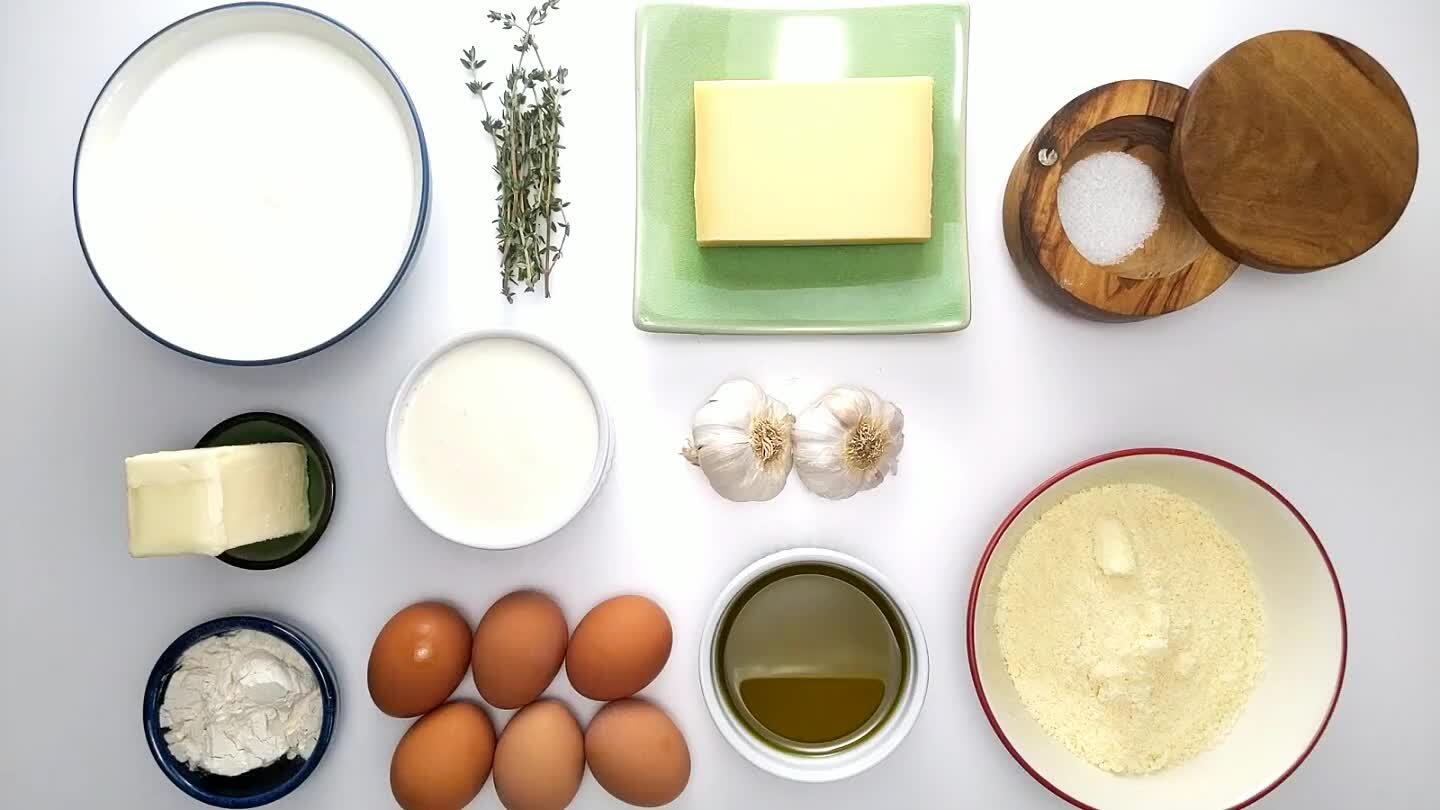
4
Preheat oven to 450°F
5


Melt the butter in a saucepan over medium heat.
6

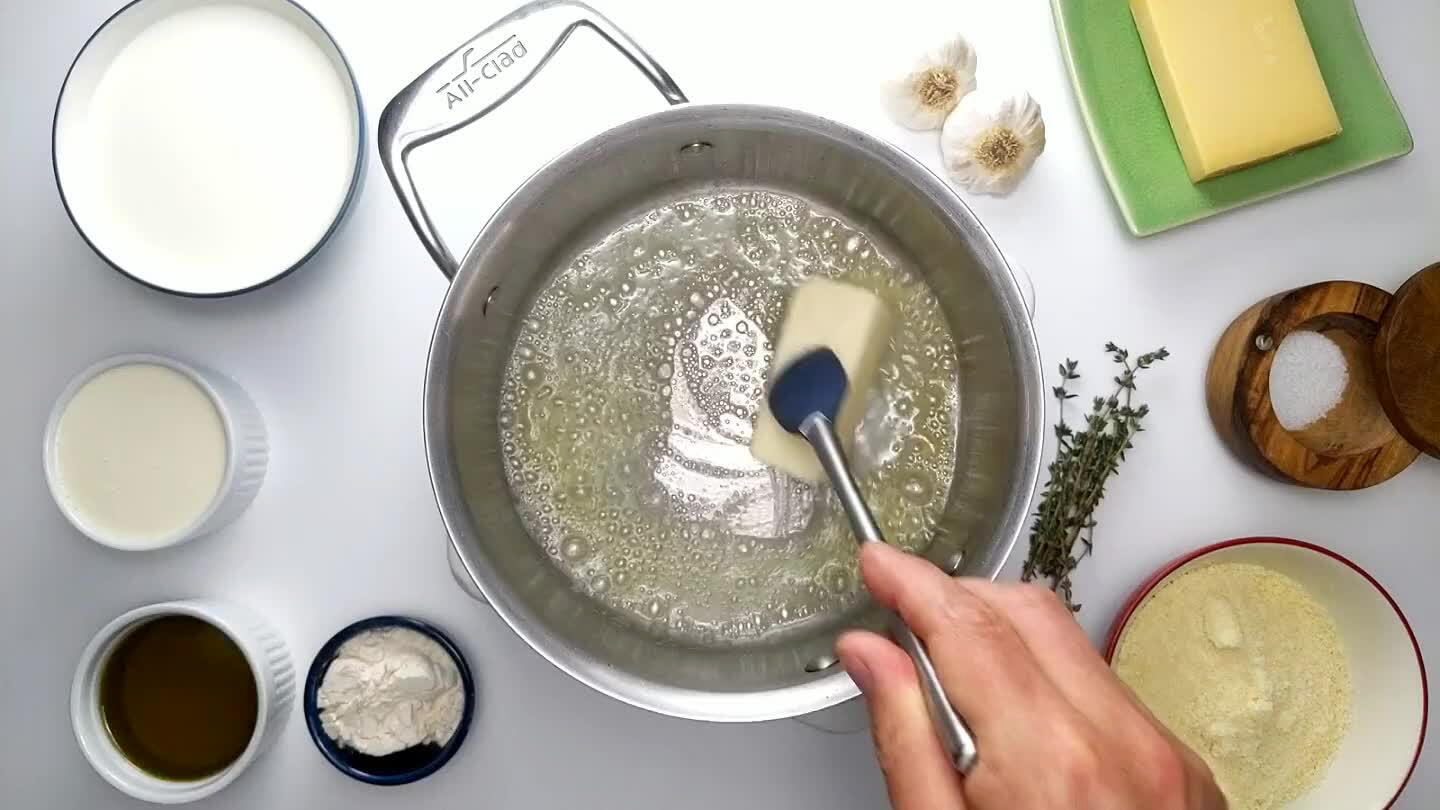
Stir in the flour.
7

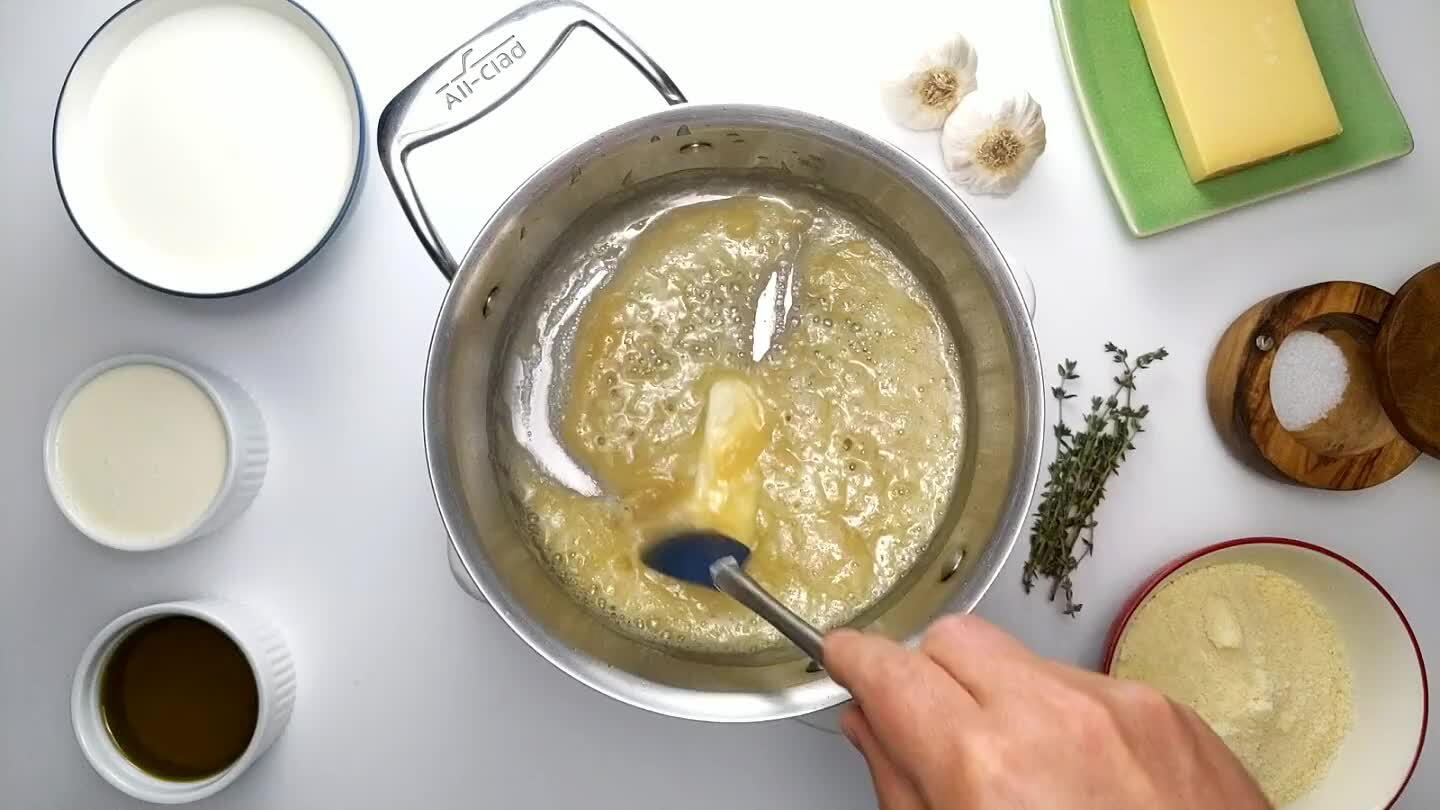
Stir constantly until the flour is toasted to a foxy brown. I like to use a spatula for this because it helps keep the flour moving evenly.
8

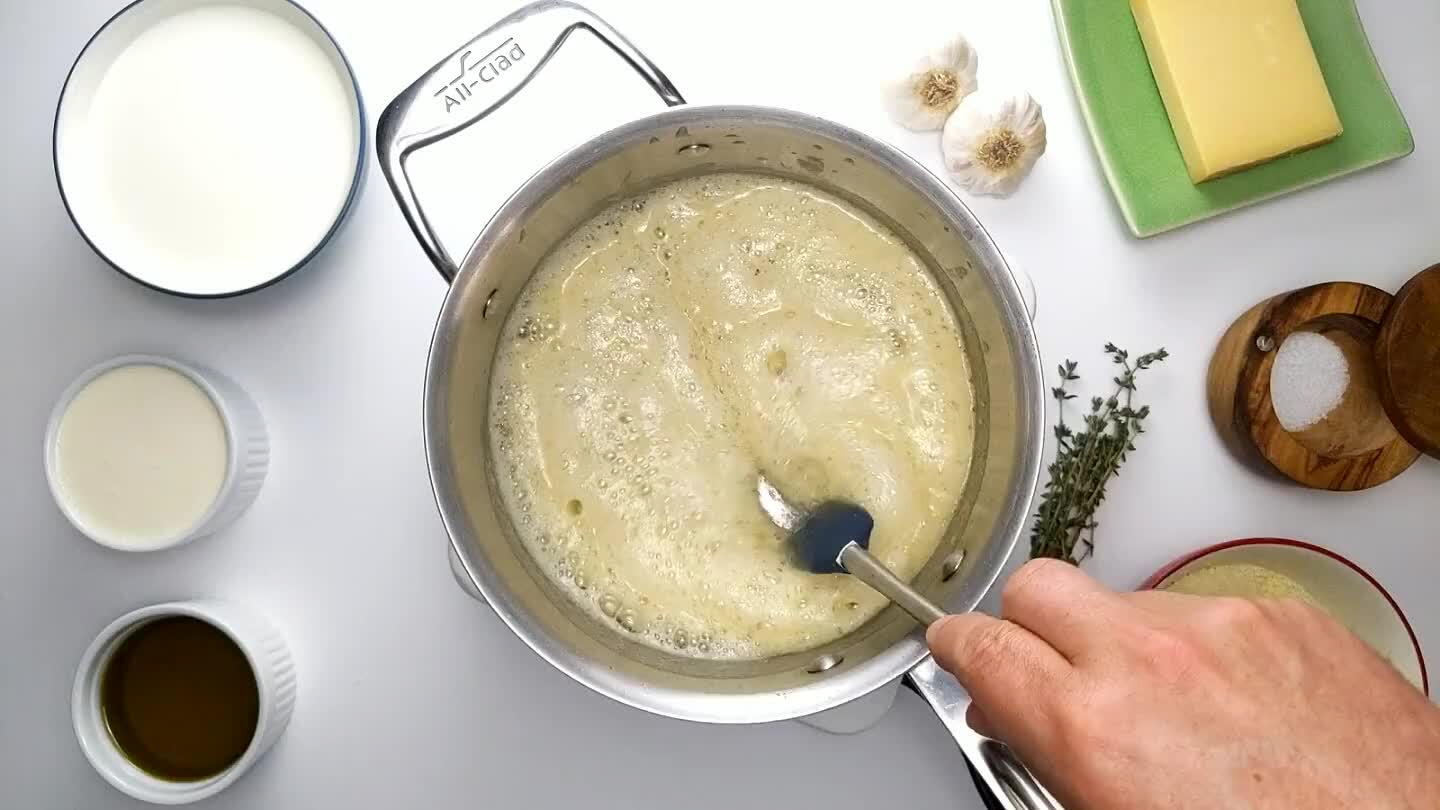
Stir in the half and half.
9

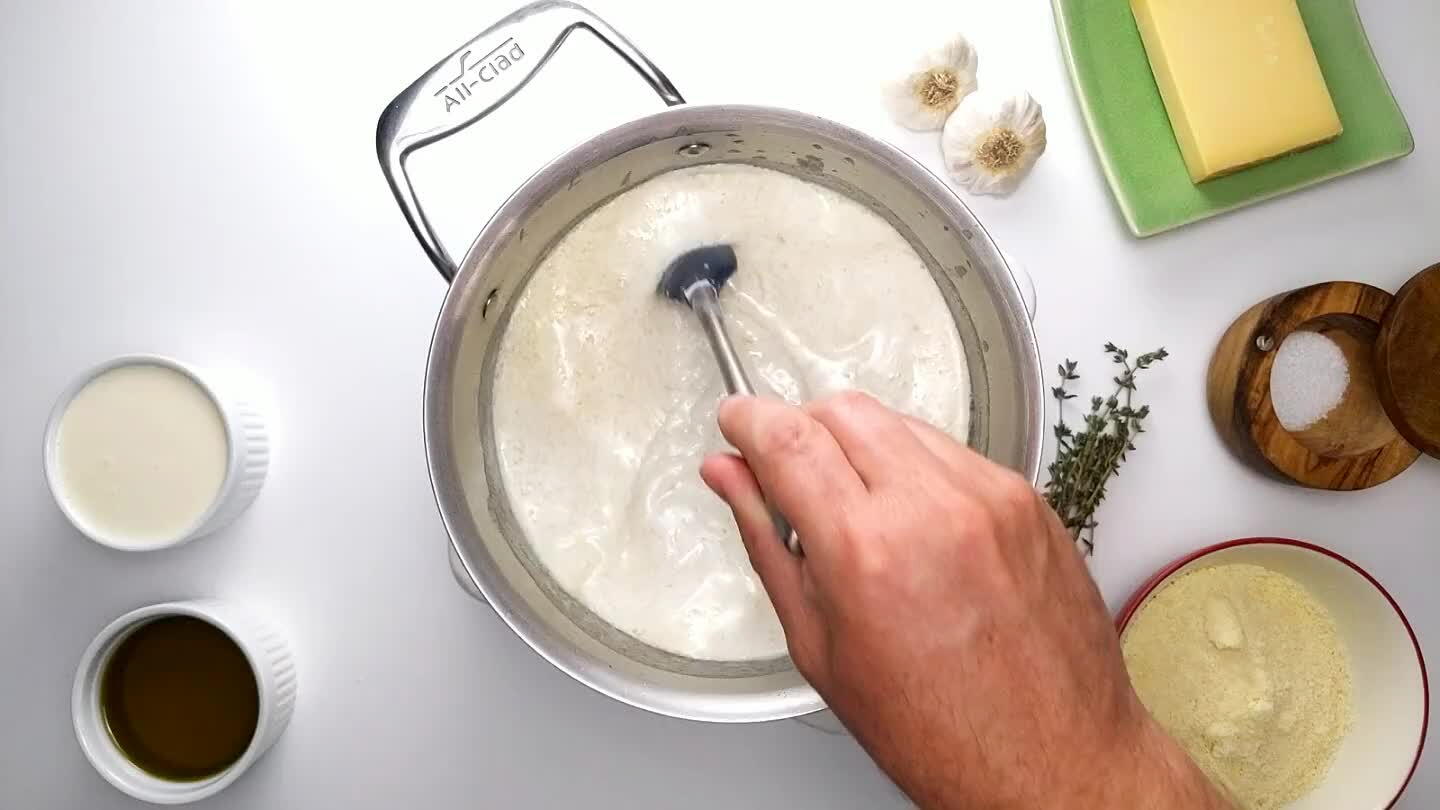
Stir in the cream. Bring to a gentle simmer, stirring frequently. At this point, you've made a white sauce (a.k.a. bechamel). This sauce serves as the base to countless soups and sauces, so it makes for a great addition to your repertoire.
10

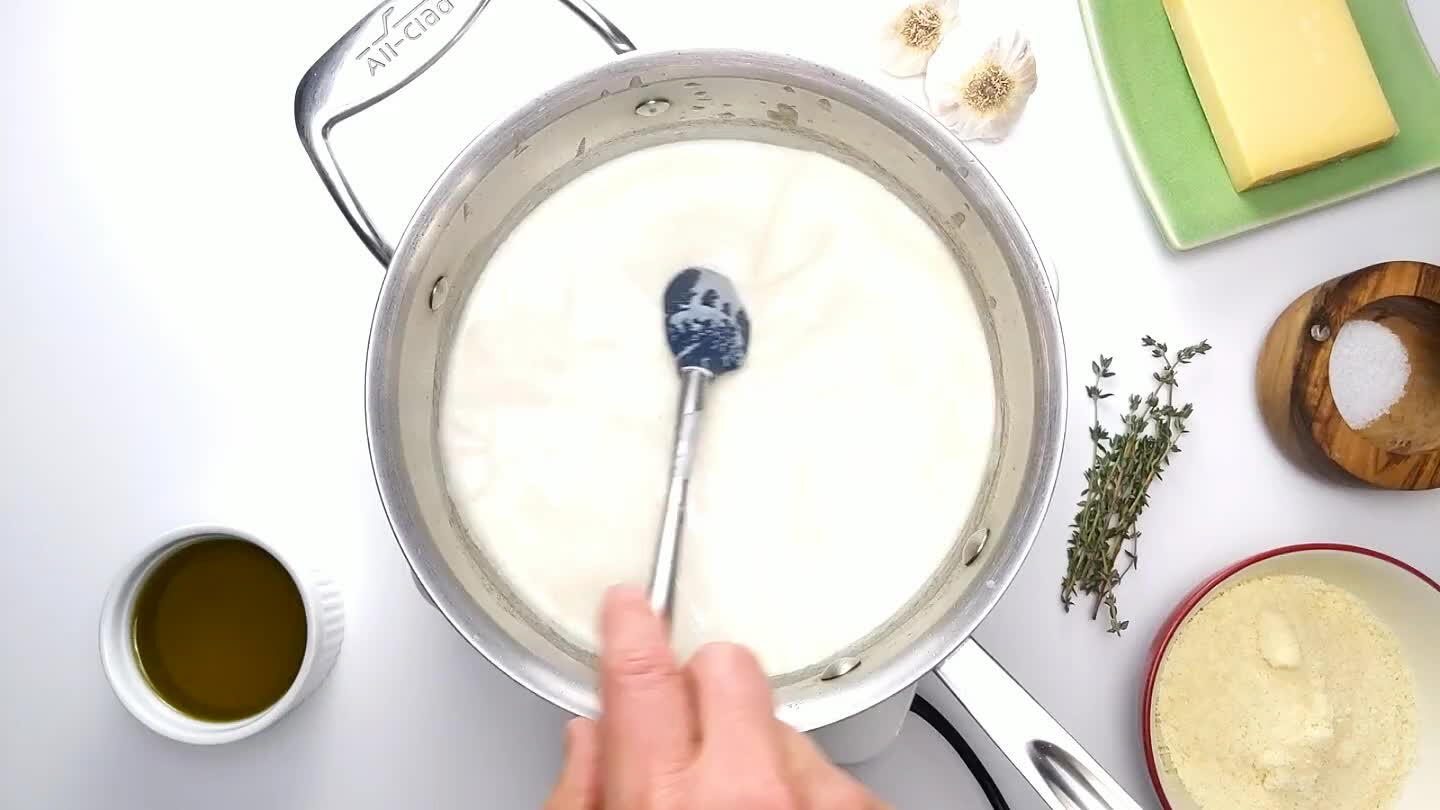
Add a few sprigs of thyme.
11

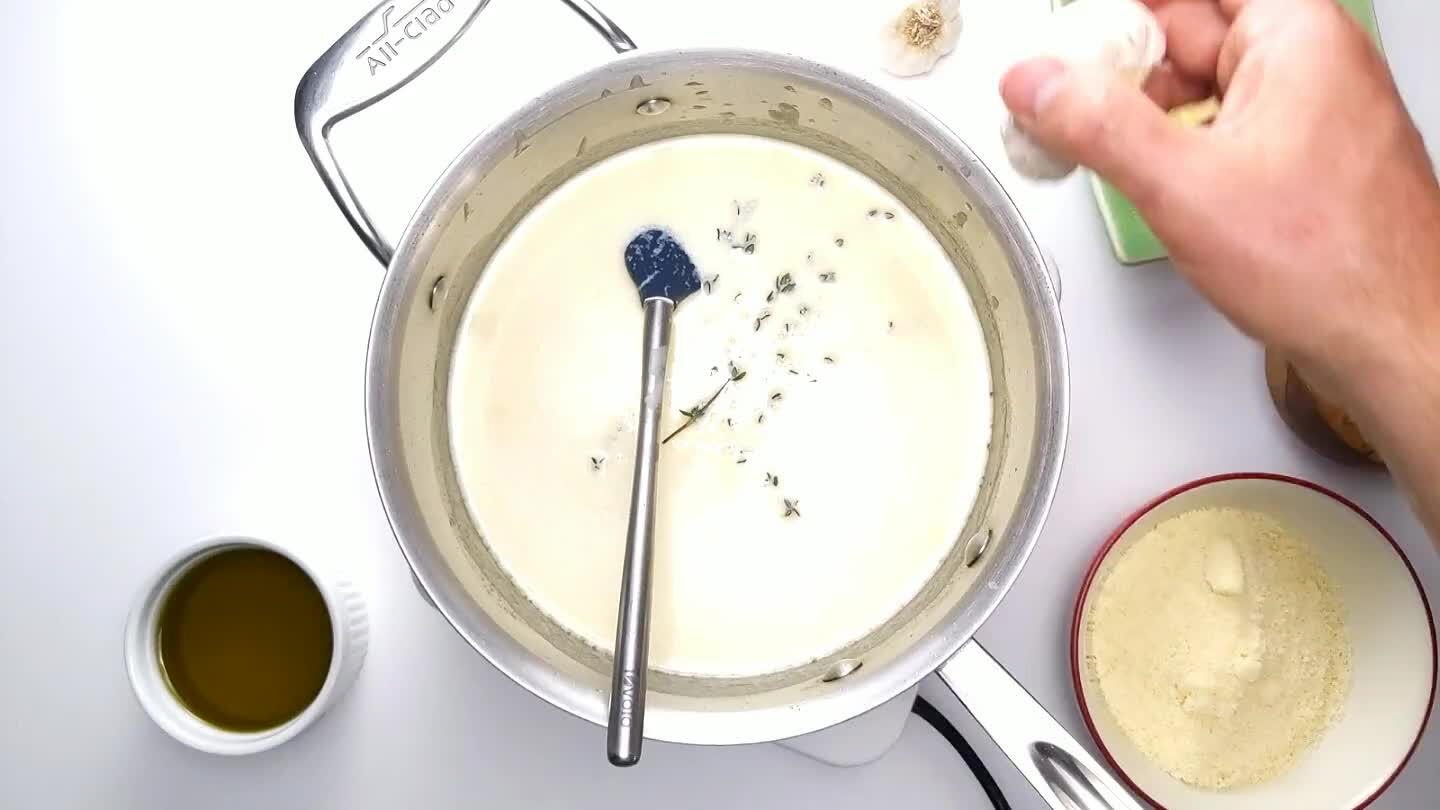
Peel the garlic cloves and add them to the cream.
12

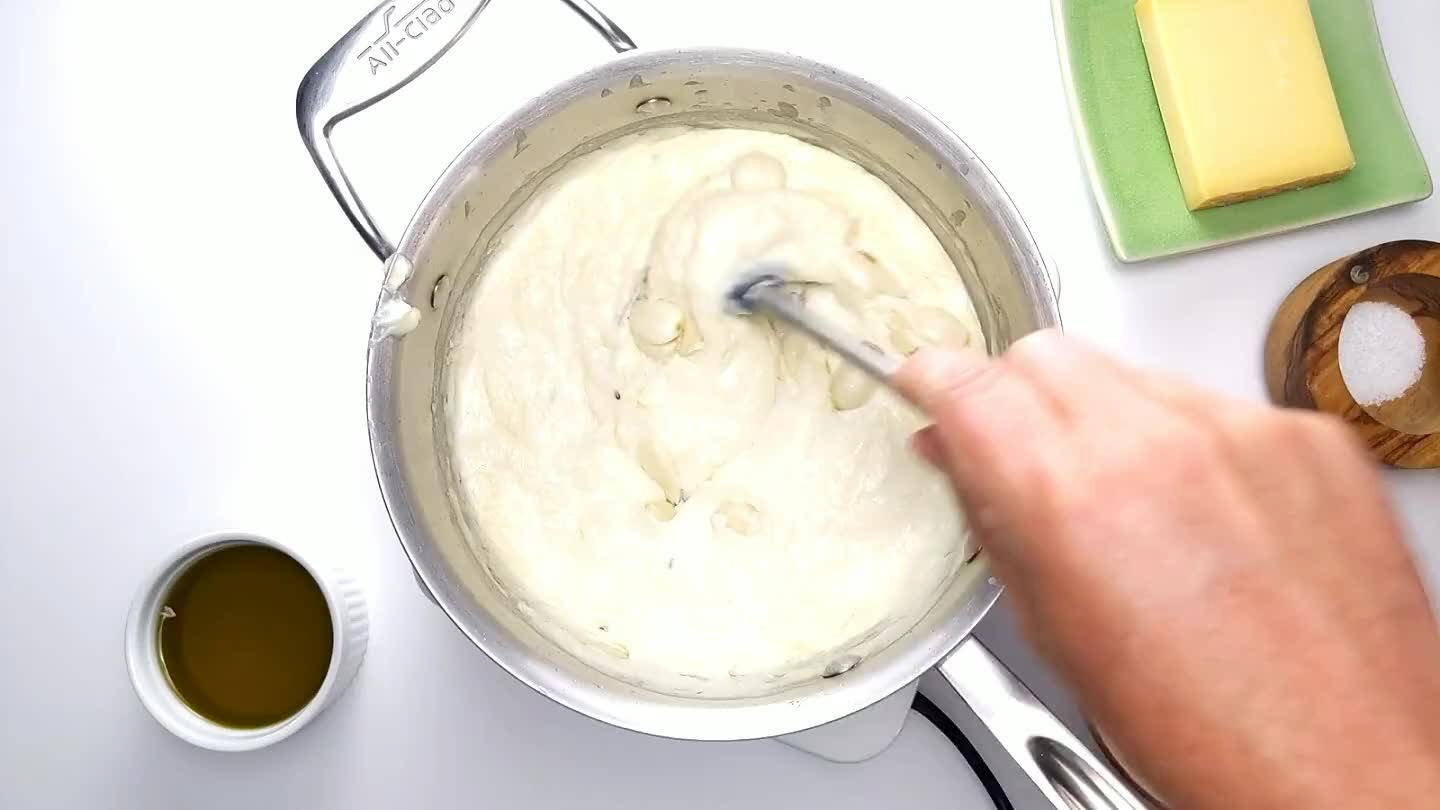
Reduce the heat to med/low and cook for about 10 minutes, stirring frequently. This will cook the garlic and the thyme a chance to steep.
13

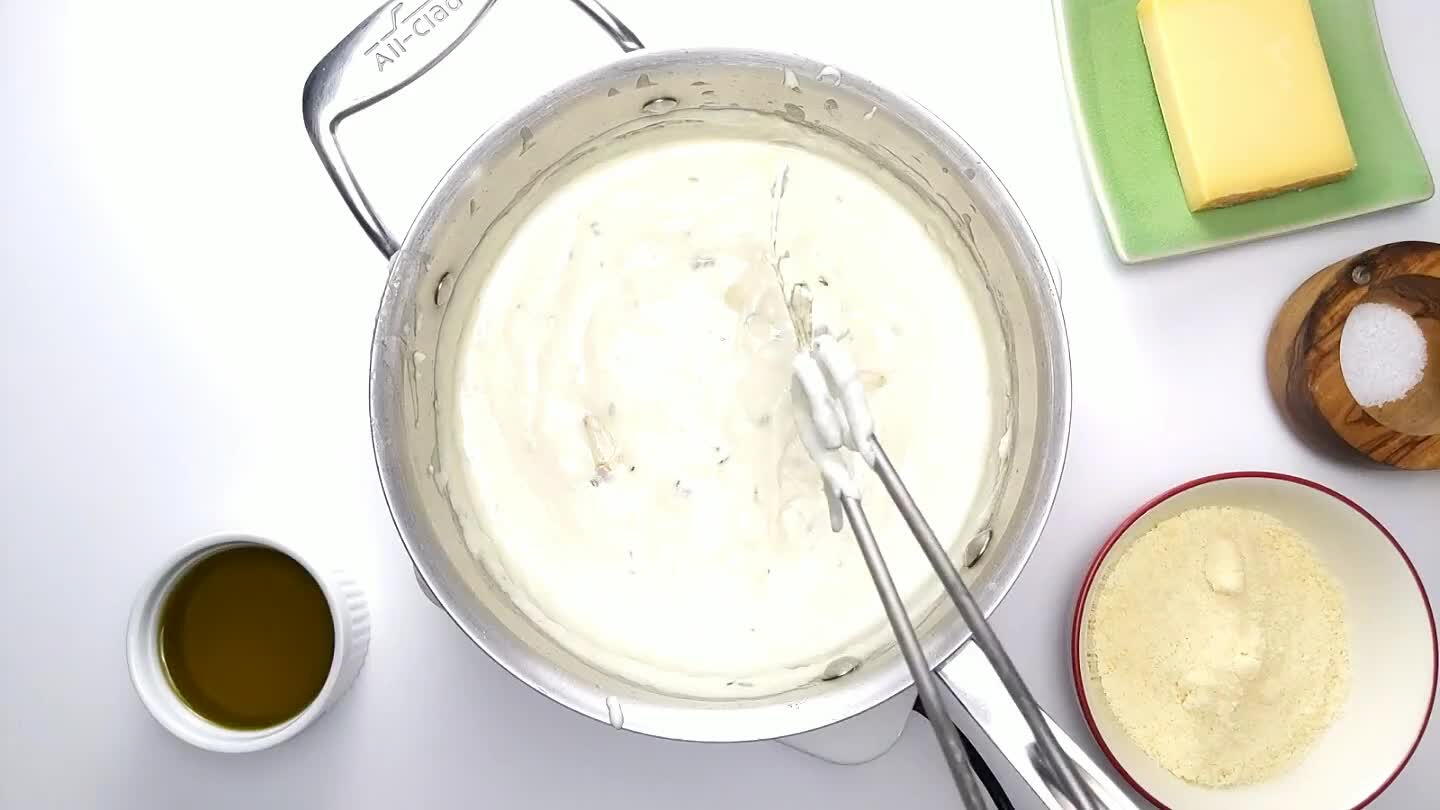
Remove and discard the thyme.
14

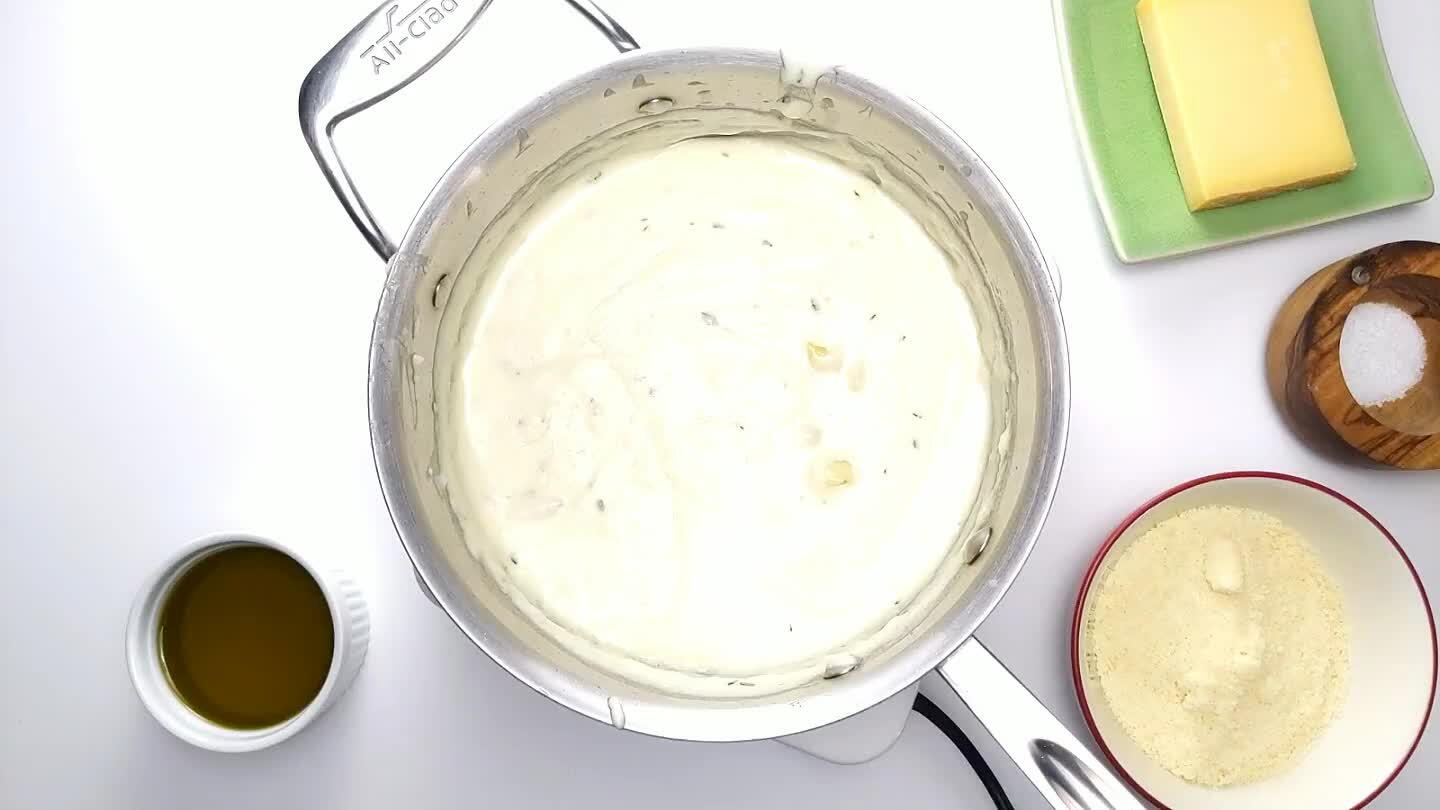
Blend the garlic into the cream sauce. An immersion blender is helpful here, but you can also transfer the sauce to a standard blender or a food processor for blending, then return the puree to the saucepan.
15

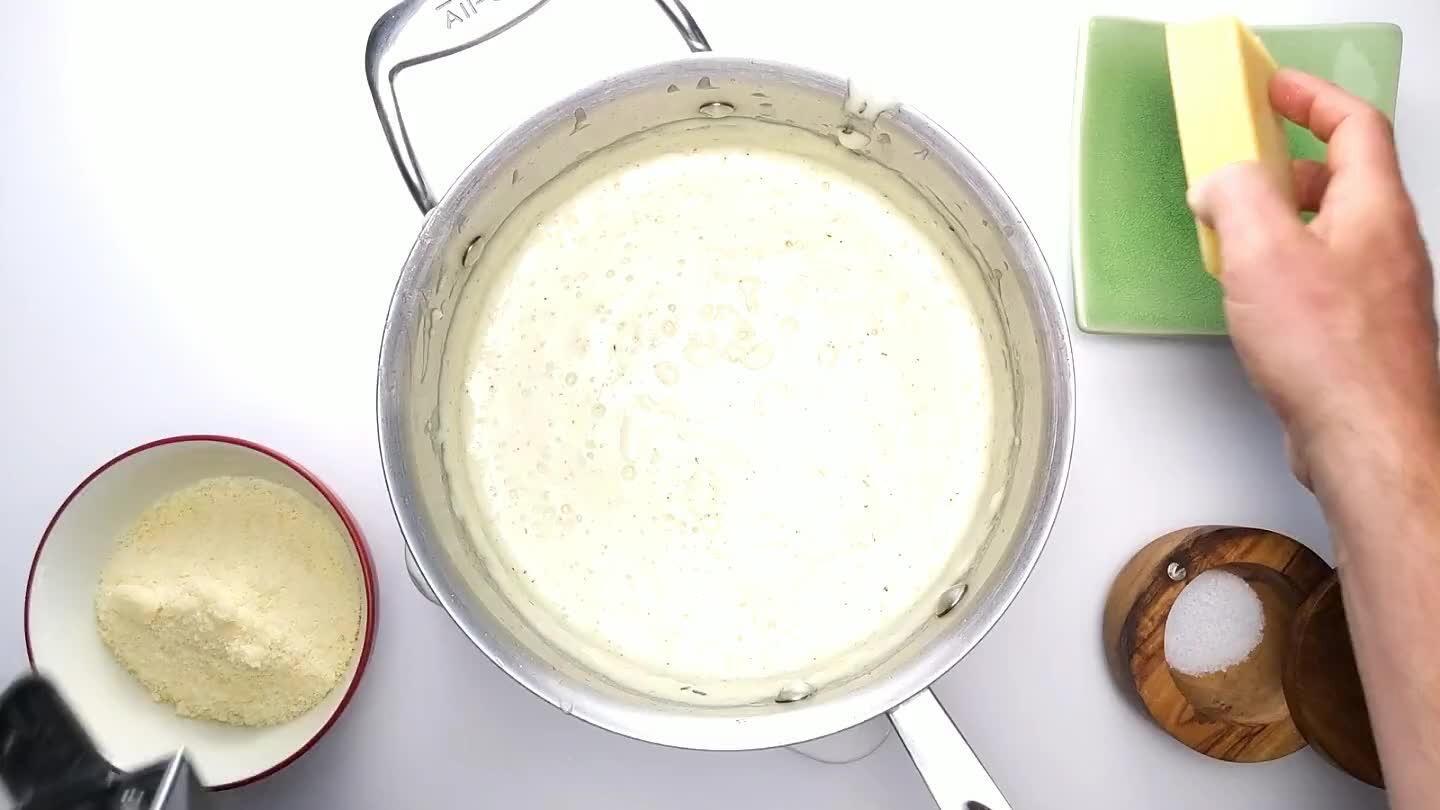
Stir in the grated gruyere. When you add cheese (usually gruyere) to a white sauce, you're evolving it into another famous sauce known as a mornay. This sauce forms the base for most classic macaroni and cheese recipes.
16

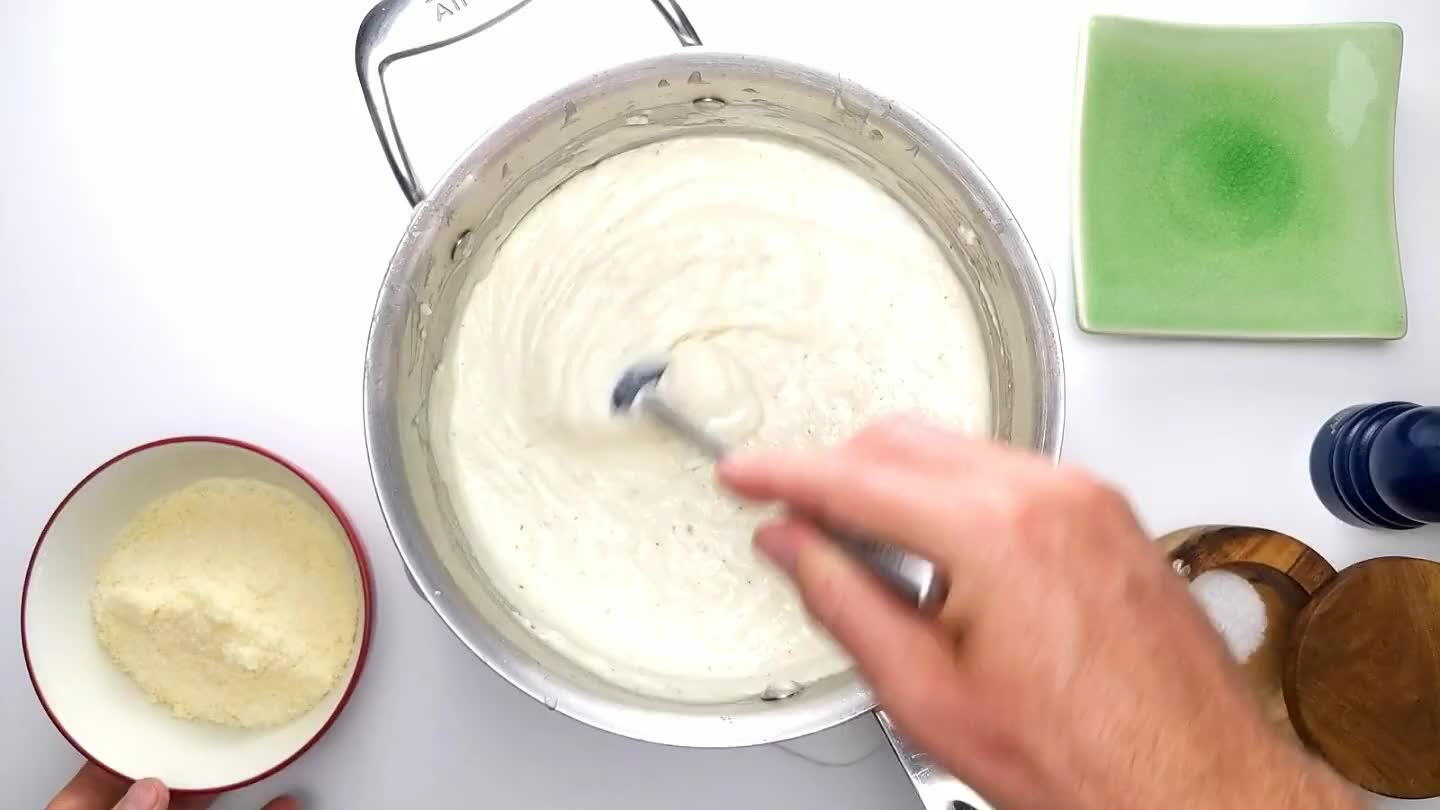
Stir in the grated parmesan.
17

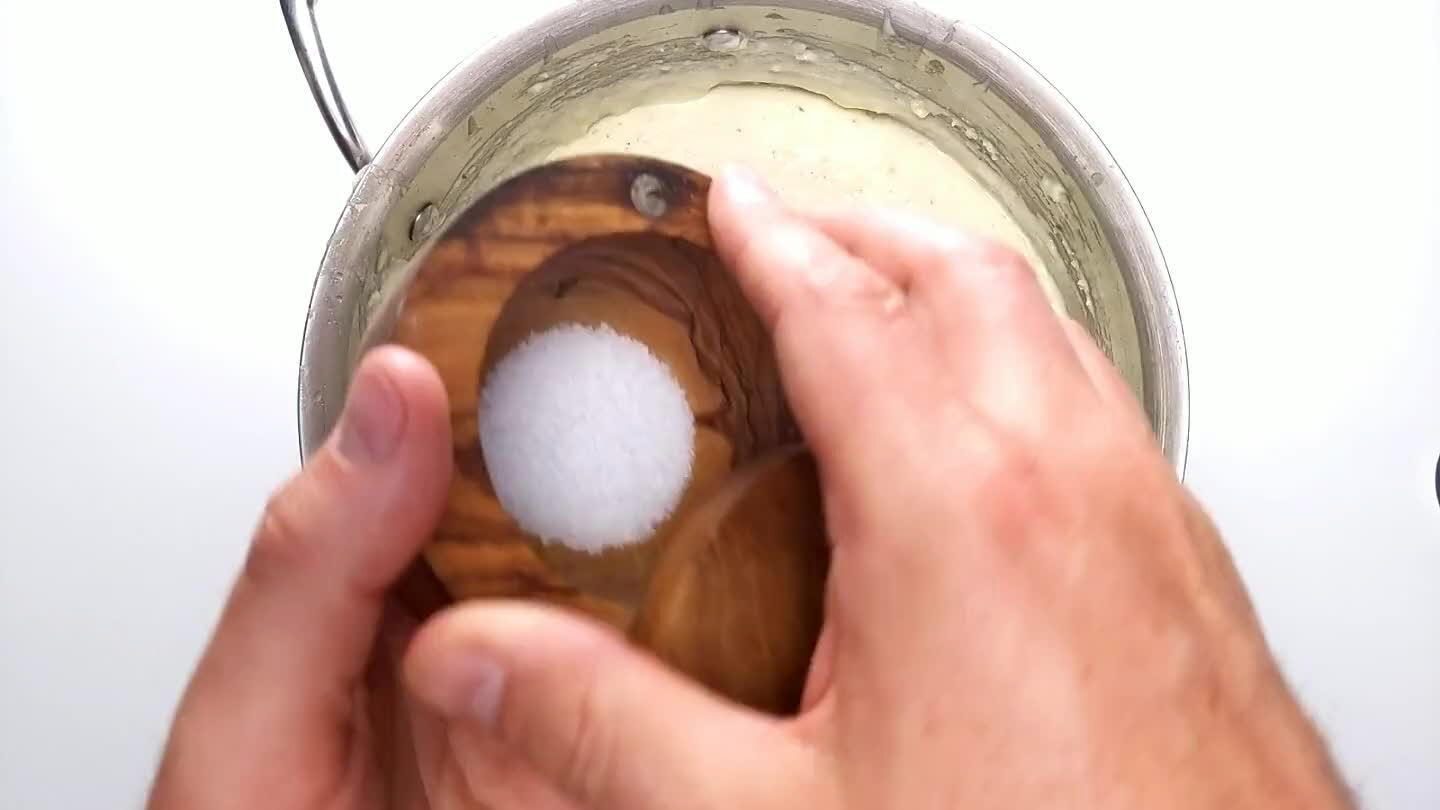
Add a small pinch of salt and some fresh black pepper. You'll get plenty of salt from the cheese, so the salt may not even be needed.
18

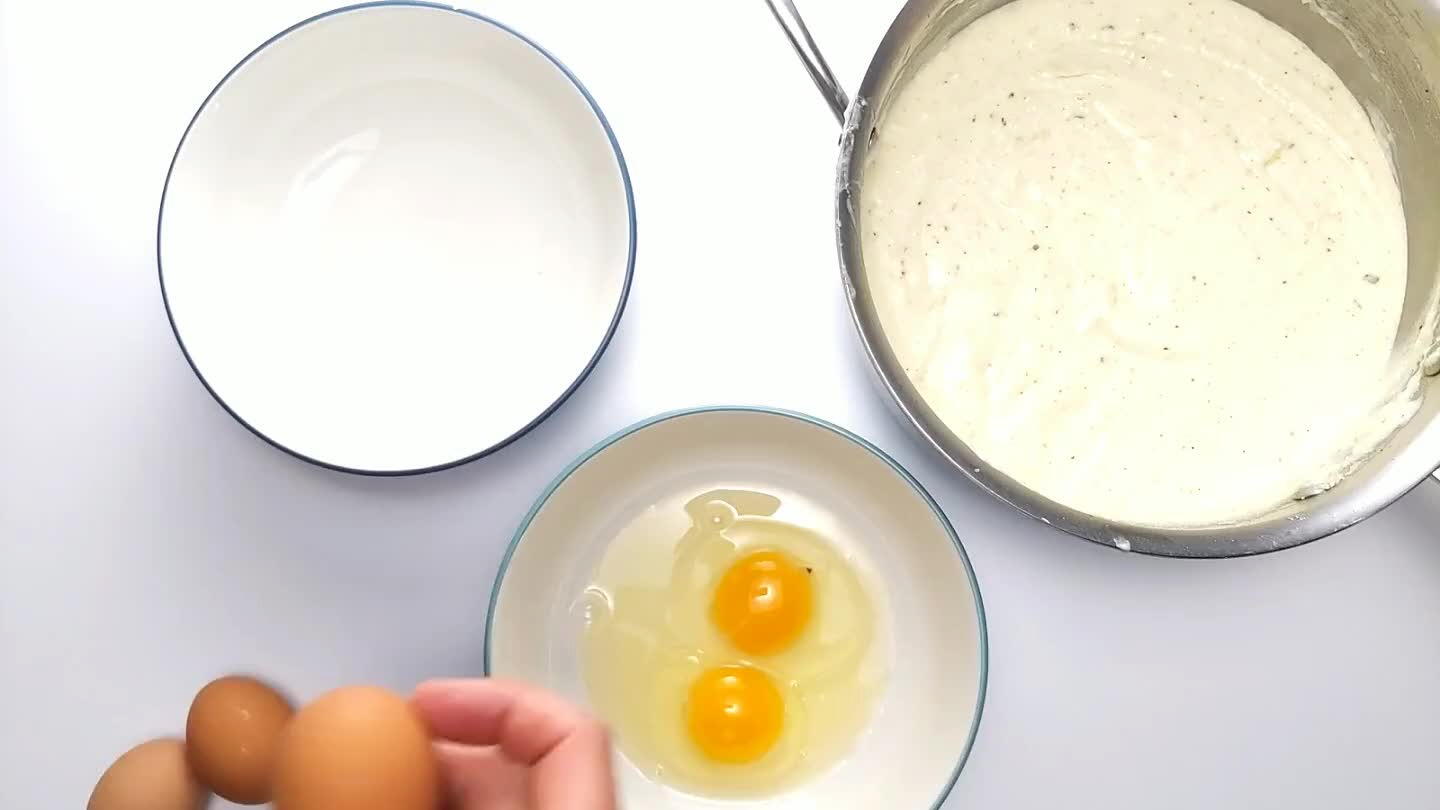
Crack the eggs gently into a shallow dish. carefully separate the yolks from the whites. If you're not a confident egg separator, separate the eggs individually. If you happen to break a yolk and spill even a small amount of the yolk into the egg white, the foaming capacity of your egg white will be greatly affected.
19

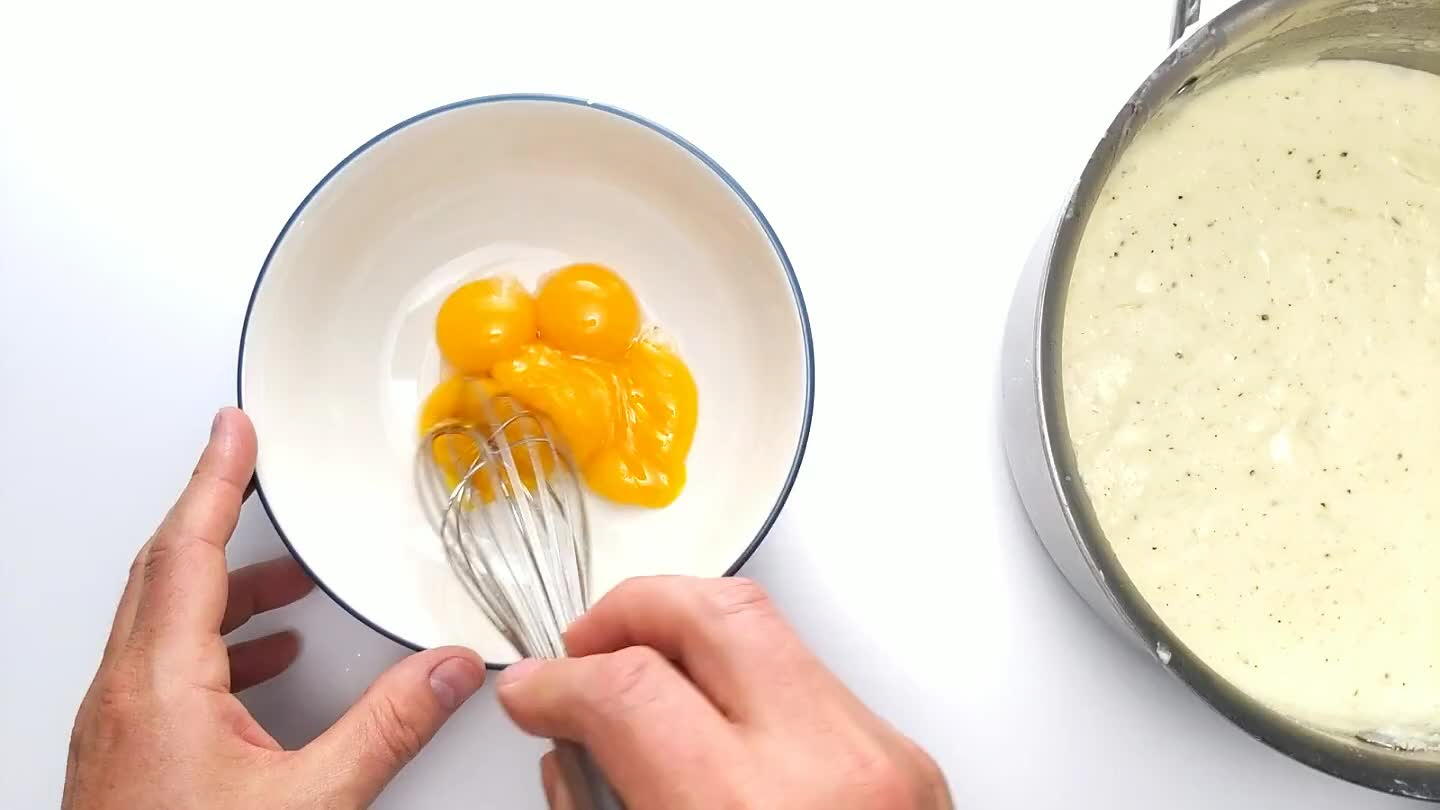
Whisk just a couple of tablespoons of the white sauce into the yolks to temper them. If you were to add the yolks directly into the sauce, they would congeal quickly and not mix evenly.
20

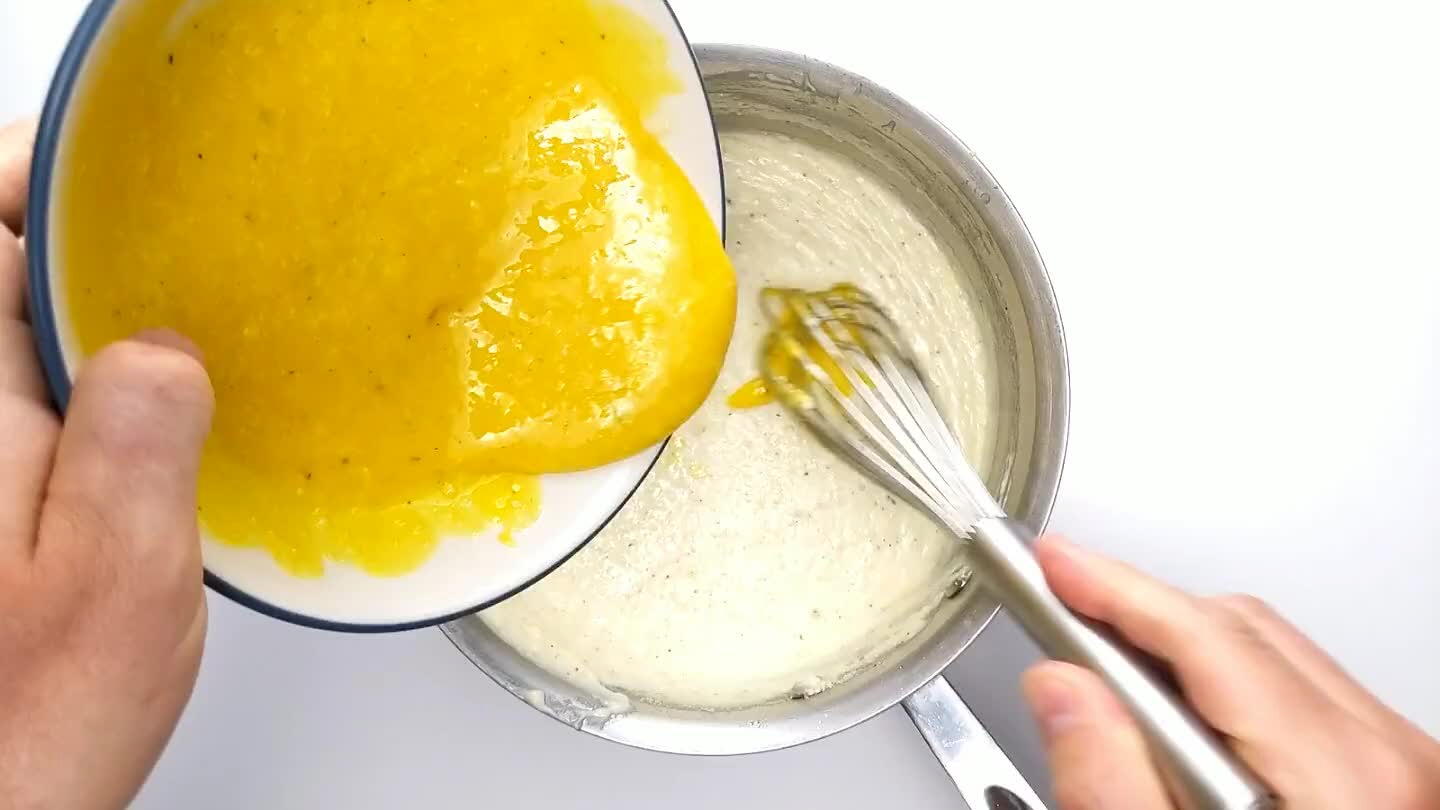
Having tempered the yolks, you can now whisk them into the sauce. Don't stop whisking until the yolks are thoroughly incorporated.
21

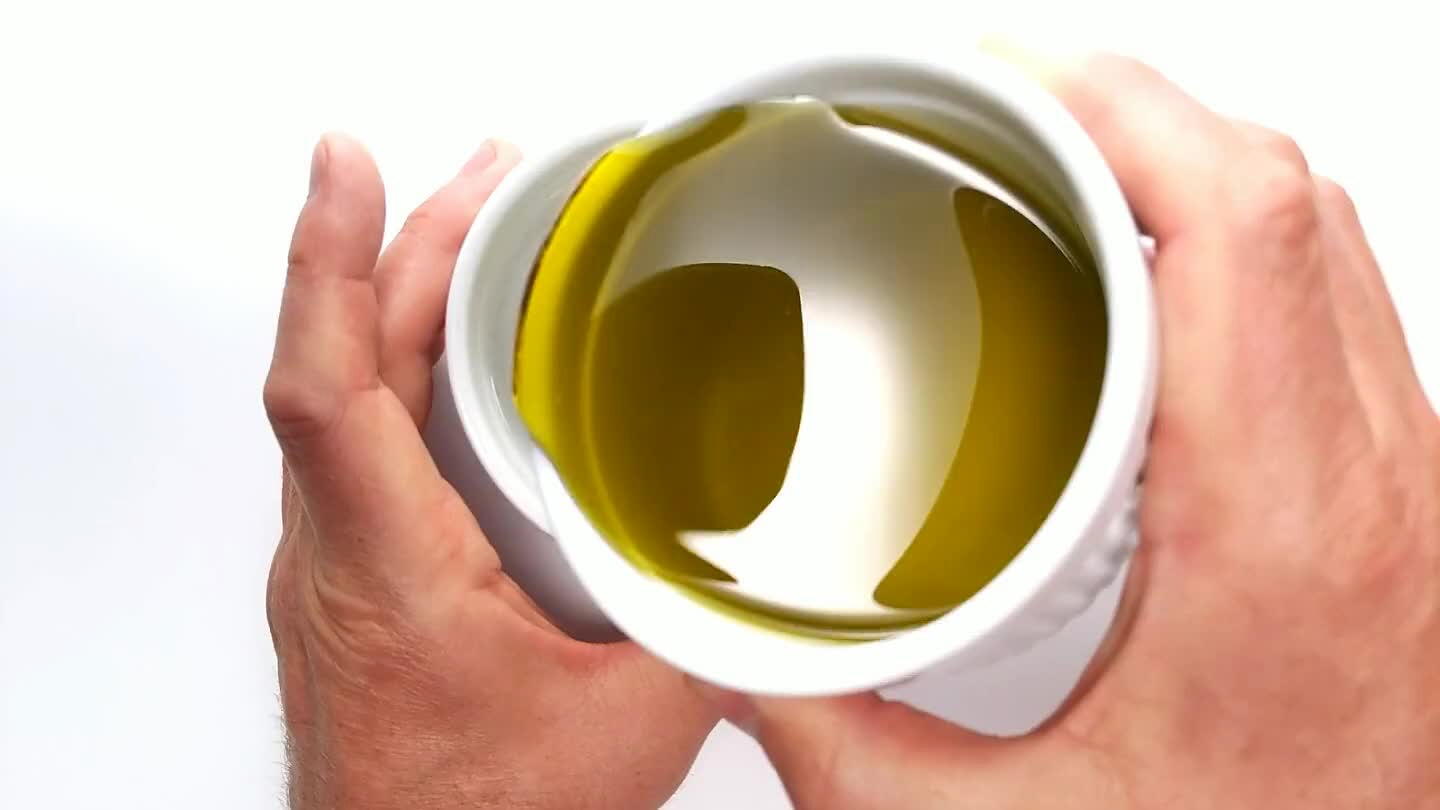
Coat some oven-safe dishes with a thin coat of olive oil and flour.
22


Take about 2/3 of the egg whites and whip them to firm peaks. That is, when you withdraw the whisk, there should remain a sharp peak of foam that does not collapse easily. This can take some time and it's not a bad idea to use an upright mixer or a hand blender to speed things up and save your whipping arm some trouble. Discard the remaining whites or set them aside for another use. Maybe whiskey sours?
23

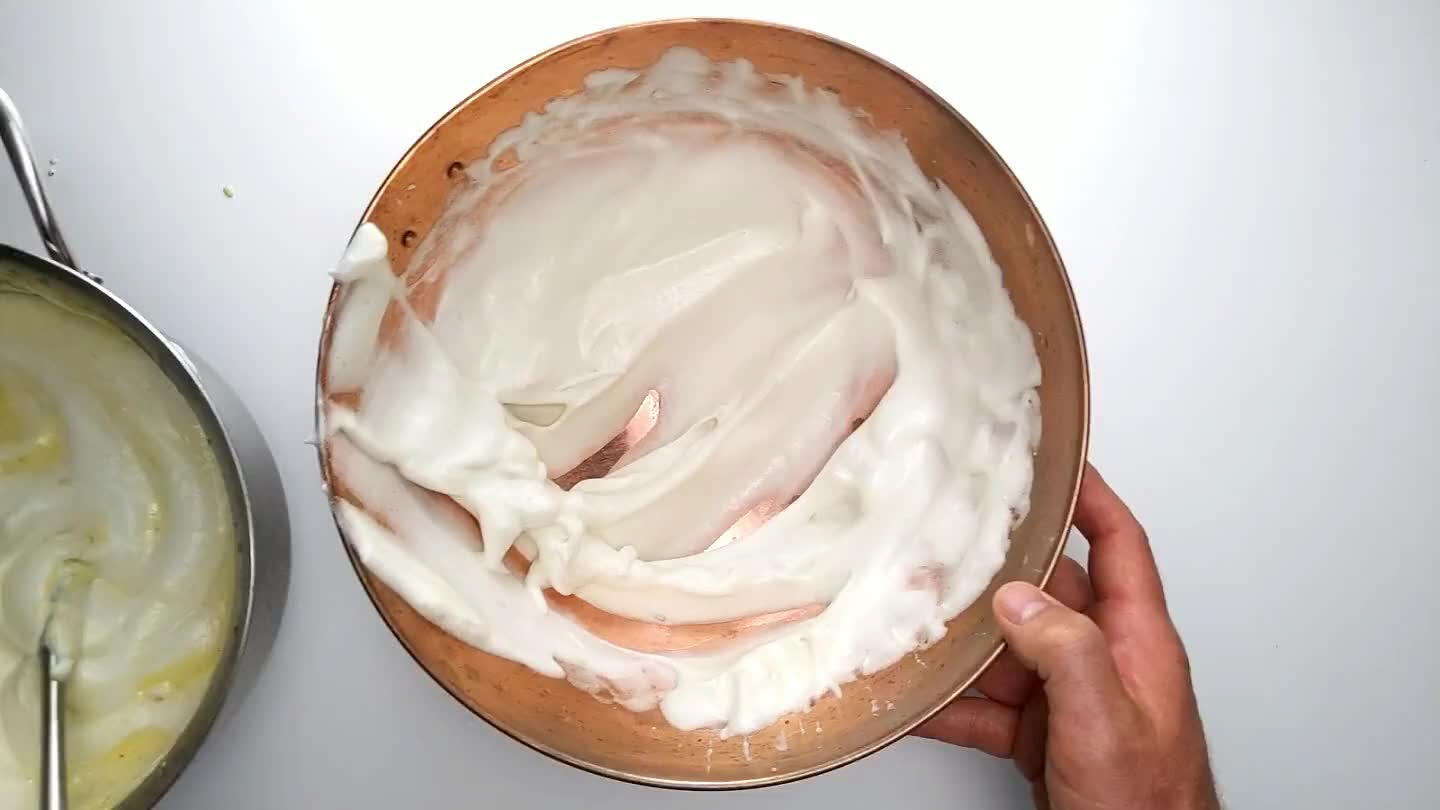
Gently fold the eggs into the bechamel. You want to get an even mix here without collapsing the egg whites. It's okay to leave some fine white streaks.
24

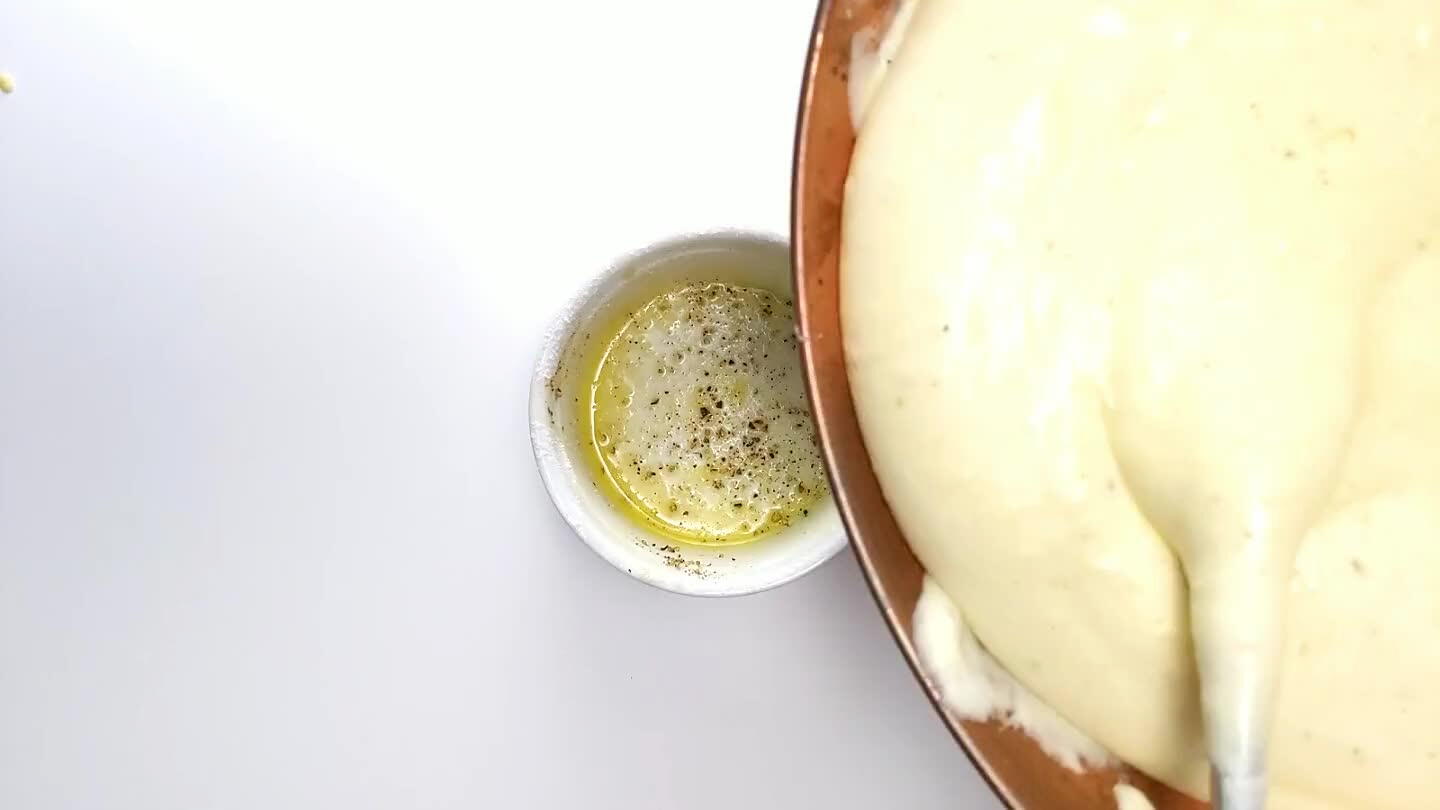
Pour the mixture into your greased and floured molds. You can fill them quite close to the rim. While I did not do this here, you can get some bonus points if you take a piece of parchment and tie it around the dish to form a vertical cone that extends the rim of the baking dish by several inches. This will contain the expansion of your souffle and make for a more striking visual presentation.
25

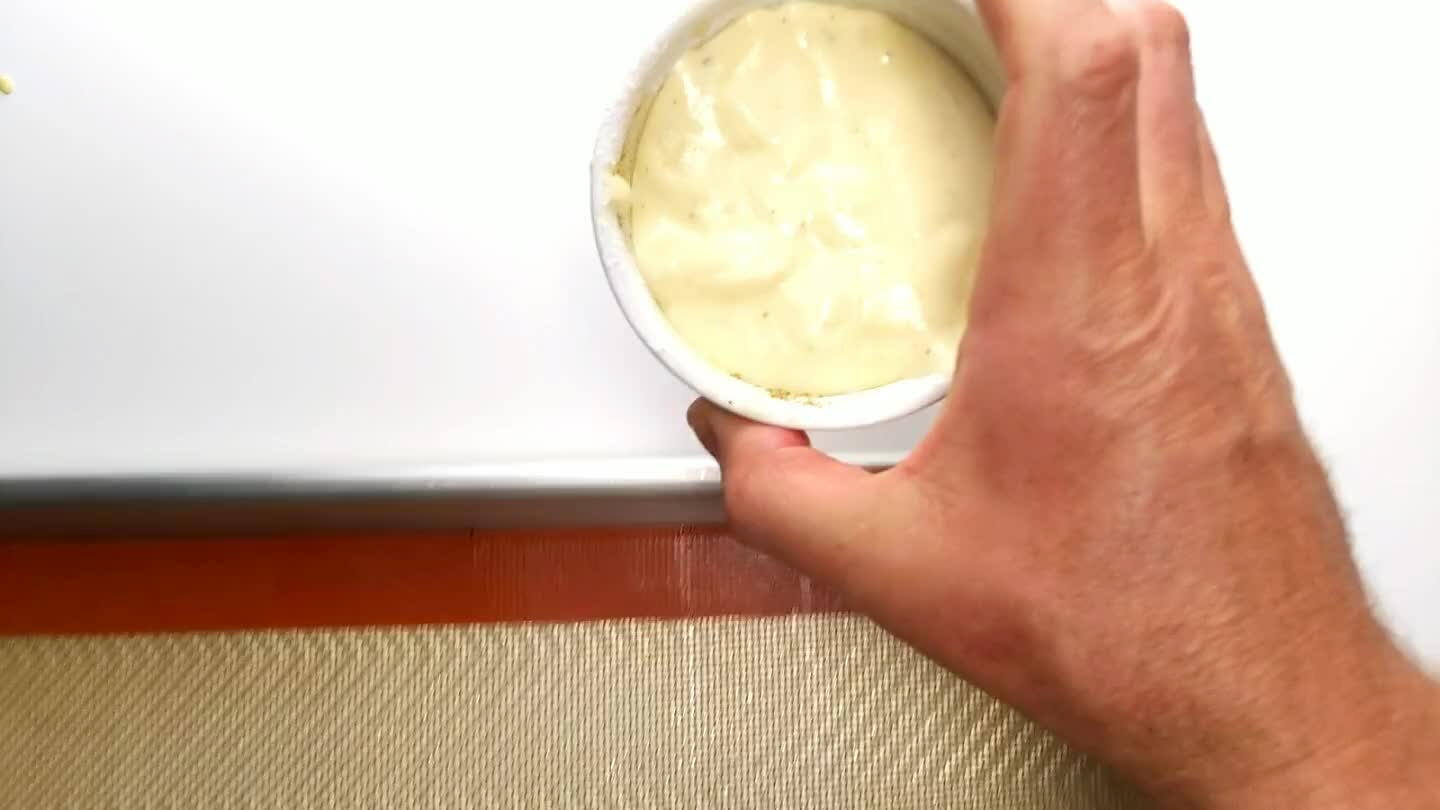
Gently place the filled molds on a baking sheet. A sheet of parchment or a silicon mat will probably help save you some cleanup time.
26

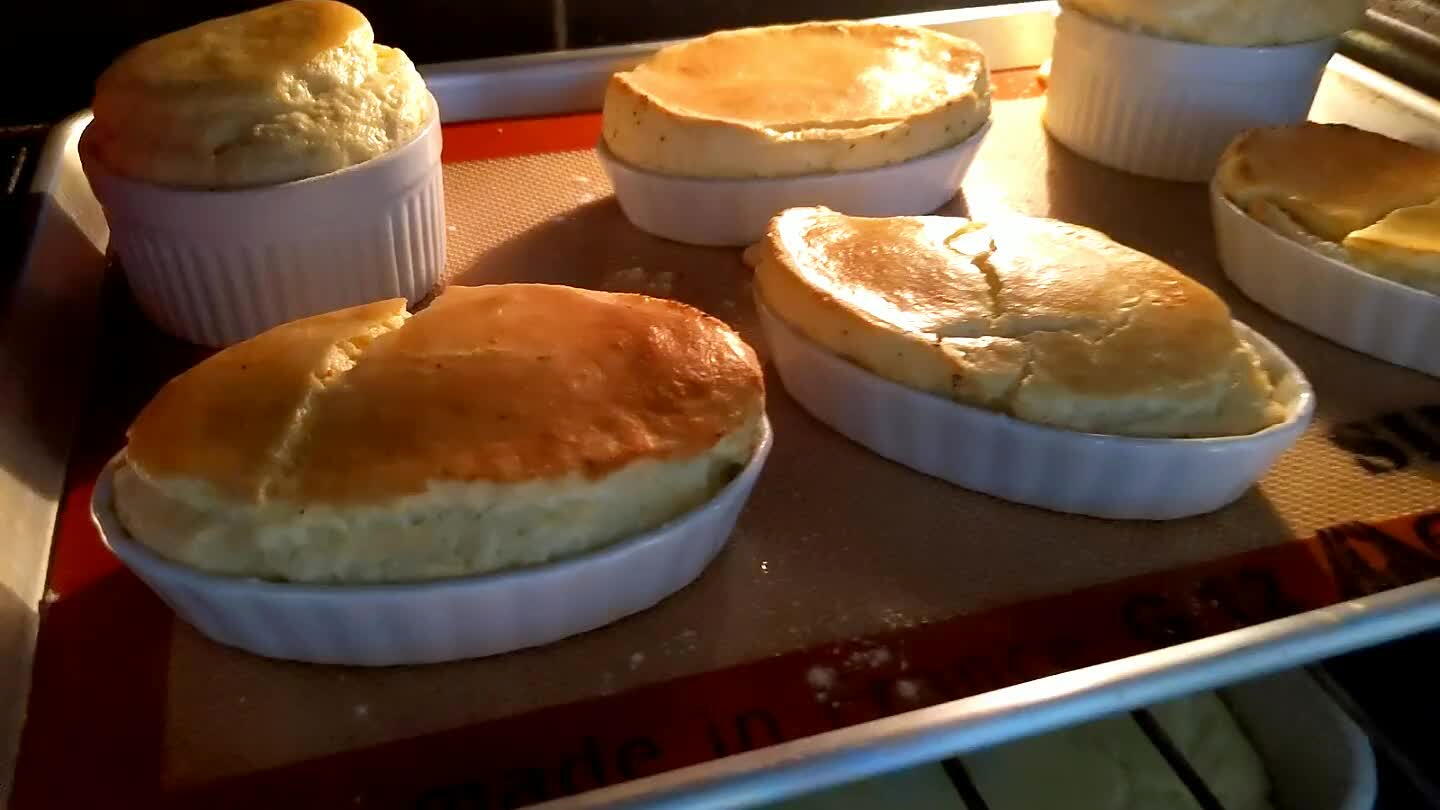
Bake for about 15 minutes, depending on the size of your baking dishes. The top should be nicely browned and raised up above the top of the baking dish. The center should be warm and creamy. Serve quickly, as even the most well-made souffle is short-lived, and will inevitably collapse.
27

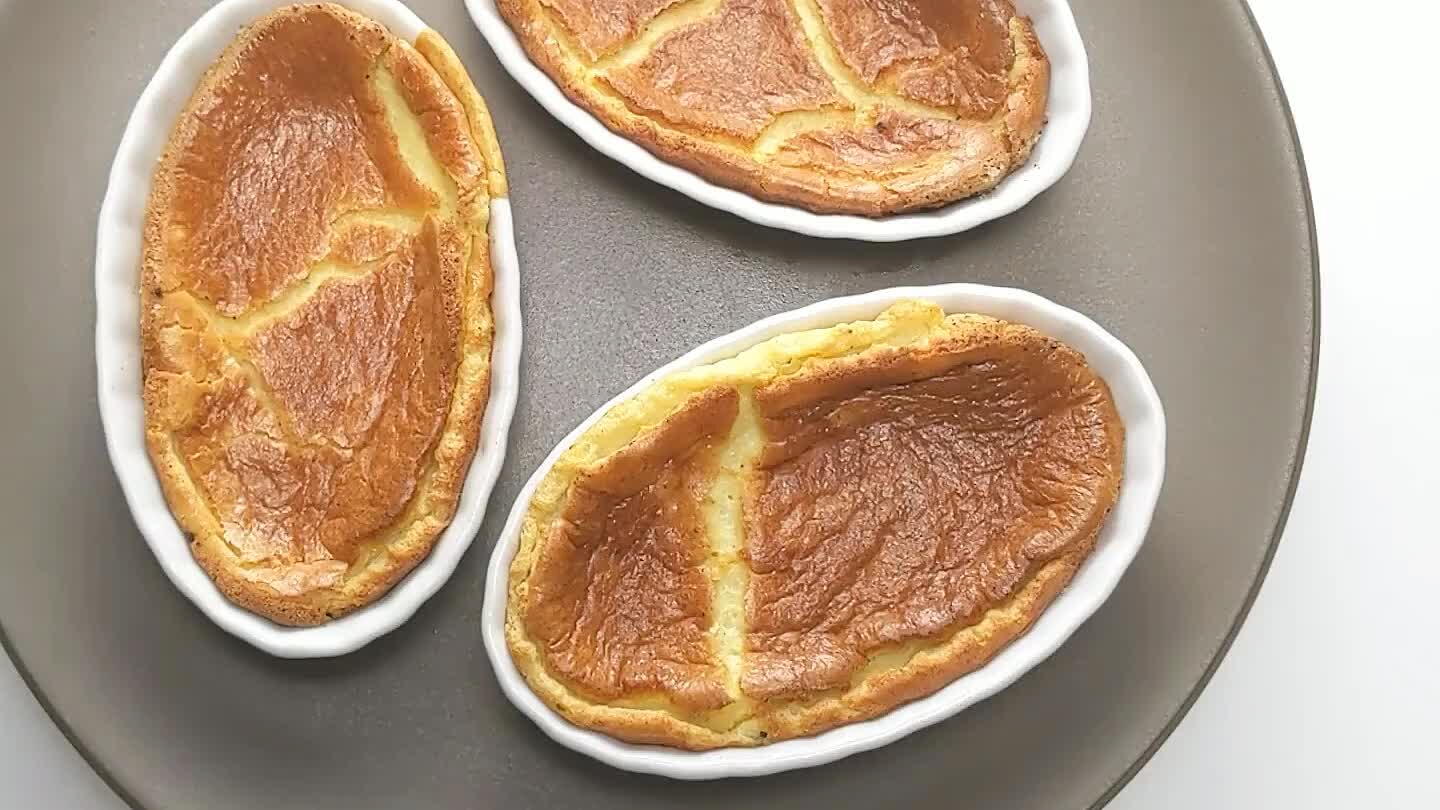

Comments